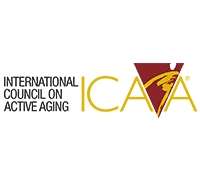What You Need to Know About Testosterone Replacement Therapy
If you are suffering from low testosterone, TRT may help with the following:
INCREASED ENERGY & STAMINA
INCREASED SEXUAL PERFORMANCE
INCREASED SEX DRIVE
INCREASED JOY & HAPPINESS
INCREASED MUSCLE MASS
Testosterone levels in men gradually decline with increasing age, particularly after levels peak in the 20s and 30s. Many factors are the culprits and can include genetics, fat storage, and comorbid disorders, which can affect how slowly or quickly testosterone levels decline related to age.
A growing number of men experience testosterone deficiency or somewhat commonly known as “low T.” Research studies show that men’s testosterone levels sometimes decrease at a rate of about 2% each year after about age 30. Additionally, further research shows that low T prevalence in men 45 years and older is up to 38.7%.
With the onset of more cases of low T, a specific treatment often prescribed by primary care physicians and endocrinologists is testosterone replacement therapy (TRT). Research in this area is ongoing, and medicine and science are making progress in defining how much testosterone levels influence both health and wellness in men.
Questions about TRT, how it works, and the benefits and risks of the treatment are common and addressed here.
What is TRT?
TRT is the acronym for testosterone replacement therapy, which is a type of hormone replacement therapy developed to restore low testosterone levels to normal in men. The TRT treatment process is similar to the concept of how type-I diabetic insulin treatment is used and administered. With TRT, the body does not produce a necessary hormone, so replacement is necessary to bring testosterone levels back to a normal level.
With TRT, synthesized testosterone administered by injection raises testosterone back to healthy levels. Besides injection, available methods (among others) of administering TRT is available in patch and cream form and is absorbed through the skin. While most males with low testosterone are over 50 years old, it is a good idea for younger men to have their testosterone levels checked, particularly if they experience symptoms.
What is Testosterone?
Testosterone (commonly referred to as “T”) is a hormone found in humans and other animals. The male testicles produce testosterone, and the ovaries produce testosterone in small amounts in women.
Testosterone is the primary male sex hormone. In human males, this hormone plays an integral part in the male reproductive development of the prostate and testes. Testosterone also promotes the male secondary sexual characteristics including bone and muscle mass and body hair growth.
In males, the body increases testosterone production significantly during puberty and declines after age 30. The hormone is mostly associated with the male sex drive or sexual function and is necessary for sperm production. Additionally, testosterone affects muscle and bone mass, body fat storage, red blood cell production, and mood.
Aging’s Effect on Testosterone
Aging is a part of life that comes with its unique changes to the body, including testosterone levels in men. These changes in men’s testosterone levels include a gradual decrease with increasing age. The declining levels, however, vary significantly with each person. Research reveals that age-related decline of testosterone is associated with dysfunctions in the endocrine glands, particularly the hypothalamus, pituitary gland, and gonadal glands, also known as the hypothalamic-pituitary-gonadal (HPG) axis.
The HPG axis is responsible for a feedback loop produced by the hypothalamus that is integral to testosterone production. Understanding how declining levels vary for different men is an important consideration for determining if the condition is due to normal aging or a treatable testosterone deficiency.
Emotional Changes
Most men may not realize why their performance (sexual or physical) is not quite up to par or why changes in their appearance in certain ways may affect their mood. Emotional changes are not often discussed and yet have a significant impact on a man’s quality of life. These emotional fluctuations are difficult to ignore or forget, particularly when it concerns the sex drive.
When it comes to emotional well-being, low T can affect concentration and focus as well as cognitive ability. Declining T levels can cause irritability, stress, and depression. Healthy testosterone levels are vital for good mental and emotional health.
Many men have gradual changes in mood and mood swings, as their testosterone fluctuatesSome may believe the changes and stress they experience is due to normal aging symptoms. Many men do not realize it is a sign of low male hormone levels and need to get checked out.
Physical Changes
Many physical changes occur in men with low T levels, including decreased muscle mass, more body fat, and tender breasts. Changes such as these are damaging to the masculine form, which no doubt is extremely uncomfortable for most men.
Other body changes can include losing body hair and undesirable weight redistribution. This includes losing fat on the hips and thighs, more prominent veins in the arms and legs, and looking uncharacteristically thin.
Sexual Changes
Normally, most adults do not lose interest in sex or have diminished sexual pleasure as they get older. Increasing in age is not an inevitable reason for sexual practices to change. However, if problems in that area exist, then it may be due to physical limitations brought on by unrealized or undiagnosed illnesses or conditions, such as low testosterone levels in men.
Low levels of testosterone could affect a man’s sexual response and cause it to slow down, particularly after he turns 50 years old. Additionally, poor testosterone health could decrease his sex drive, which could also affect his attitude and self-confidence, making the problem even worse.
Testosterone is vital to multiple male sexual functions, and sex drive and performance changes with low testosterone levels. Low T can cause low libido, sexual dissatisfaction, erectile dysfunction (ED), or even infertility because of sperm count.
Changes in sexual function for men with low T levels are restorable. There are options for men looking to regain diminished T levels. A proven solution to improving all aspects of male health affected by low testosterone is Peak Performax. Booking a consultation is easier than ever before.
How Do You Know If You Have Low Testosterone?
The many symptoms that can present with low T in males are often significant and distinctive. However, some men do not always develop symptoms and learn about their condition during a routine physical or through bloodwork. The effects vary from person to person, but when symptoms do present themselves, they are particularly worrisome.
What are the Symptoms?
Low T symptoms generally negatively affect overall health and well-being, which is a common reason why men seek medical attention. Men with testosterone deficiency issues also report that symptoms often get worse over time, and drastically affect their quality of life. The most common symptoms include but are not limited to:
- Low sex drive/decreased libido
- Impotence/erectile dysfunction
- Increased body fat
- Depression
- Small or shrinking testicles
- Brain fog/poor concentration
- Decreased energy
- Loss of strength and muscle mass
- Infertility
- Hot flashes
- Anemia/low red blood cell count
- Weakness
- Brittle bones
- Hair loss on head and all over body
- Sleep disorders
Why is Low Testosterone Bad?
Low levels of testosterone often contribute to male problems like reduced sex drive and erectile dysfunction, which can take a toll on mental and emotional health. Low T can also lead to fragile bones that could break and other serious health problems. Additionally, low testosterone levels may be a sign of some other underlying medical issue.
Health concerns associated with testosterone deficiency are a significant consideration. Low T may cause long-term side effects. Particularly in men with extremely low levels, some symptoms are serious. Weakening bones, for example, can lead to osteoporosis and broken or fractured bones. Research also shows low testosterone is linked to increased risk of death from heart disease and other conditions.
How is TRT Used in Necessary and Elective Medical Procedures?
Medically, TRT is used to treat a condition known as hypogonadism, which happens when little to no hormones are produced by the sex glands. The condition presents as either primary or secondary. With primary hypogonadism, problems with the gonads cause low T counts while problems with the hypothalamus (pituitary gland) cause secondary hypogonadism.
Non-medical or elective uses of TRT benefit people in other ways such as weight loss, enhanced energy, better sexual performance, increased athletic endurance, and gaining muscle mass. Additionally, increased muscle strength in middle-aged and older males is significantly shown in research studies.
How Does TRT Work and How is It Administered?
The TRT process is ongoing, and typically takes anywhere from three to six months to show progress and start working. It is gradual. The process works by helping the body get back to producing testosterone in a healthy range. Results show slow reversal of low T symptoms in men. The physician monitors the patient closely to determine a steady baseline dose of TRT, which then most men notice energy level improvements, increased vitality, and better quality of life.
TRT administration methods include injection, topical, cheek patches, implants, oral, or intranasal. The treatment is available by prescription only. If symptoms are consistent with low T, a physician completes the physical exam, medical history, and lab tests and then prescribes the therapy.
Injectable TRT
The injectable method is inexpensive and a common choice. The injection is given in the muscle or under the skin, involving taking the injection every 1 or 2 weeks. The long-acting treatment spaces the second injection out to 4 weeks after the first and is given in the buttocks. Then, subsequent injections are given 10 weeks apart.
Topical TRT
The topical method is administered by applying a daily cream or gel. The treatment works gradually through absorption and consistently stabilizes testosterone levels in the blood. However, the patient should not come into skin-on-skin contact with anyone else for at least six hours after application. Since it is absorbed through the skin, someone else may have a reaction to it, particularly children and pregnant women.
Instead of the cream, topical TRT patches are another option. The patches stay on the skin for 24 hours between doses. It is important to note that TRT patches could irritate the skin.
Cheek Patches
TRT cheek patches are buccal patch placed under the upper lip, which releases testosterone steadily over 12 hours. Use is similar to chewing tobacco. Some patients report gum/mouth irritation and headaches using the cheek patches.
TRT Implants
Testosterone implants are administered with plastic testosterone pellets implanted under the skin of the buttock or upper hip. The pellets dissolve and work over a period of 3-6 months. The procedure is minor inpatient surgery with the pellets inserted below the skin in fatty tissue.
Oral TRT
Oral testosterone replacement is more expensive and may cause liver damage with long-term use. Other concerns with this method include warnings about hypertension and stroke with this method. The oral method is ideal for people that may be unable to use any other form of TRT.
Intranasal TRT
TRT administered intranasally is a testosterone gel applied three times daily at 6–8 hour intervals at the same time every day. It is important to note common side effects including nosebleeds, headaches, nasal drip, and discomfort.
How Much Does TRT Cost and Where to Get It?
Typically, costs for TRT runs as low as $100 per month.
However, costs for TRT treatments depend on the type of prescription and whether its name brand of generic. Health insurance can cover part of the cost. Additionally, total cost may be different based on geographical locations and method of administration.
What are the benefits, risks, and side effects of TRT?
The benefits of receiving TRT when testosterone levels decline with age to increase testosterone production and improve low T symptoms in men. Benefits include maintaining healthy:
- Sex drive and sexual function
- Sperm count
- Muscle mass and strength
- Bone density
- Fat cell distribution
- Red blood cell count
- Facial and body hair
As with any medical procedure or protocol, the possibility for side effects and risks is present. For TRT, side effects may include:
- Acne, rash, itching, or oily skin
- Male pattern baldness/hair loss
- Excessive hair growth
- Decreased sperm count (infertility)
- Increased blood clot risk
- Irritable bladder
- Anxiety, aggressive behavior
- Breast enlargement/soreness
- Prostate enlargement
- High blood pressure
- High cholesterol
- Shrinkage of the testicles
- Increased heart attack and stroke risk
- Testicle shrinkage
- Liver dysfunction
Who Should Get TRT and Who Should Not?
A diagnosed low testosterone level doesn’t necessarily need treatment, particularly because of potential side effects. It is advisable that men with confirmed low T blood levels and symptoms should consider having TRT treatments.
People with certain medical conditions should avoid TRT. Research also shows that TRT may worsen existing conditions, which the Endocrine Society recommends people with the following conditions not be put on TRT:
- Recent heart attack or stroke
- High antigen levels specific to the prostate
- Lower urinary tract symptoms
- Breast or prostate cancer
- Prostate nodules
- Elevated hematocrit levels
- Thrombophilia
- Sleep apnea
- Congestive heart failure
FAQ’s and Myths of TRT
Naturally, frequently asked questions arise when considering if TRT is appropriate for men with low testosterone levels (hypogonadism), particularly those with symptoms.
Frequently asked questions include:
- Is TRT right for me?
Depending on the condition of a patient’s health and the presentation of symptoms, the doctor will determine if the patient is a candidate for the treatment. It is a good idea to understand and consider the possible side effects and risks, as well.
- What are low testosterone symptoms?
Symptoms of low T include but are not limited to:
- Enlarged male breasts
- Decrease muscle mass and loss of strength
- Body or facial hair loss
- Decreased sexual desire
- Erectile dysfunction
- Reduced testes size
- Decrease bone density
- Metabolic syndrome
- Insulin resistance
- Is low testosterone inevitable with aging?
Unfortunately, yes. Testosterone levels naturally decline gradually as men get older. Some men have more or less decline, depending on various factors. If low T is affecting quality of life, TRT is an option.
- Does TRT really work?
TRT treatments work for most people. Research studies show TRT treatments are good for restoring testosterone back to normal levels. Benefits include seeing increased muscle and less fat, bone strength, better metabolism, improved mental and emotional health, and enhanced sexual function.
- Is TRT safe?
TRT is proven safe in most cases. However, it is important to understand that side effects could happen and there are certain risks, as is with any medical treatment. Most side effects are easily managed with regular physician follow-ups.
It is also worth noting that some people abuse TRT for bodybuilding, which is dangerous and can cause serious unwanted side effects.
Myths include:
- Testosterone decline doesn’t have to be treated because it’s a part of getting older.
Although it is true that testosterone gradually declines with age after 30, the importance of having T levels checked regularly is good overall health maintenance, as low T can contribute to a host of health problems, including heart disease.
- Once TRT is started, it cannot be stopped.
This is untrue and not to worry. If someone gets on TRT treatments and needs or wants to discontinue the treatments for some reason, it can be done with the guidance of a doctor. Tapering off the medicine is the best way to stop it most comfortably—usually over the course of 3 to 4 weeks.
- Low T symptoms are not reversible.
Fortunately, this is incorrect. Most symptoms like decreased libido, low energy, muscle loss, weight gain, and erectile dysfunction will improve within 3-4 weeks of TRT treatments. The symptoms of low T are reversible with treatment.
- Only older guys have low testosterone.
Low testosterone is a health condition that is indiscriminate of age in some cases. It can affect men of all ages. Testing and examination for the condition is important, especially if symptoms arise.
- Patients have to give themselves the shots.
Some TRT patients are experienced and prefer to administer their own injections, but this is not necessary if someone does not want to do it. TRT treatment is usually administered by a trained medical professional a medical facility.
Does TRT Affect Energy?
Low testosterone levels affect energy levels in a negative way, such as causing decreased endurance, chronic fatigue, reduced physical performance, and decreased mental function. However, TRT can restore energy levels to normal because it restores testosterone to normal levels. Many patients report that TRT gives them an energy boost and makes them feel a bit more energetic.
Can TRT Fix Erectile Dysfunction (ED)?
While some men with low T report restored sex drives when on TRT, eliminating ED often needs supplementation with ED meds. The treatments do not necessarily improve erections in men with that being the only symptom.
Some research studies reveal that TRT can help with ED by improving issues like fatigue and low libido. However, TRT research related to ED continues. One study shows that 40-60% of men with both low T and ED reported improvements.
How Long Do I Need to Take TRT?
When considering TRT, it is important to understand that the treatments for boosting testosterone levels. But it is not designed to eliminate or treat underlying causes of low T. As of now, TRT treatments must be continued indefinitely because it is not a cure for low testosterone. If the treatments are discontinued, symptoms may return. TRT may be a life-long treatment protocol for some.
Conclusion
The aim and purpose of testosterone replacement therapy is to medically improve signs and symptoms presented by patients related to testosterone deficiency. As noted, low T commonly causes reduced libido, erectile dysfunction, sad/depressed mood, anemia, muscle loss, and bone mass loss. However, TRT works by increasing the body’s serum testosterone levels to normal ranges.
TRT treatments were first used over 70 years ago, which lead to various formulations and methods of administration. Today testosterone replacement therapy is widely used for treating men with symptomatic and non-symptomatic hypogonadism with well-documented benefits.








